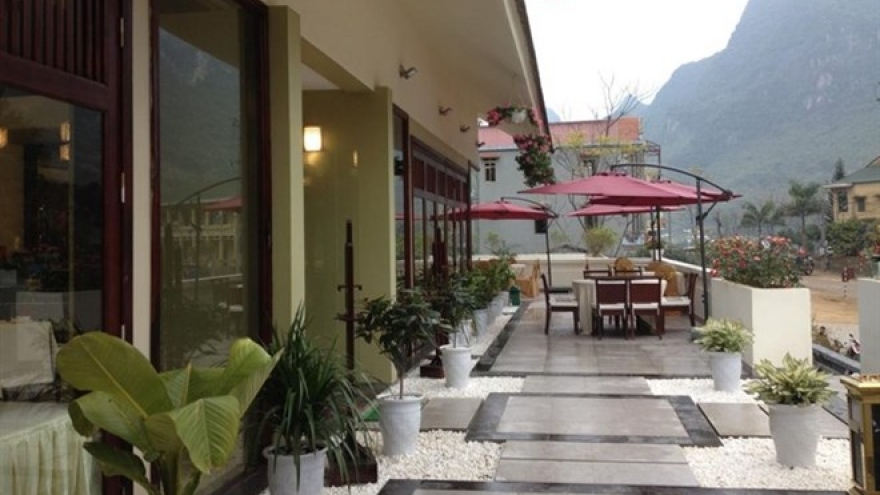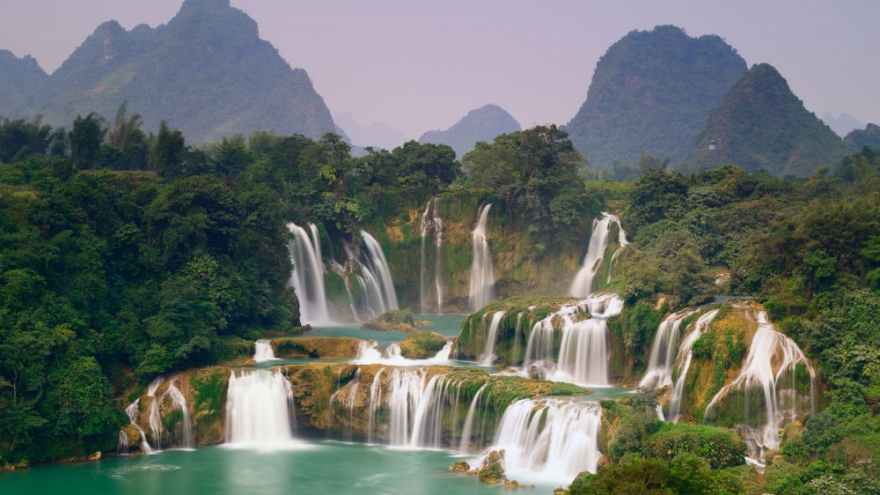Planning on Ban Gioc waterfall tourism site approved
The Prime Minister has recently approved a master plan to develop Ban Gioc waterfall tourism site in the northern mountainous province of Cao Bang into a key tourist attraction.
 |
Under the planning, some 1,000 hectares of land will be zoned off for the Ban Gioc waterfall tourism site while 156.7 hectares will be for Ban Gioc waterfall tourism centre.
It expects to welcome 750,000 visitors by 2020 and 1.2 million people by 2030. Accommodation services will increase from 1,010 rooms by 2020 to 1,750 rooms by 2030.
The tourism centre is designed to consist of Ban Gioc waterfall landscape, scenery areas along Quay Son river, hill and mountain ecological landscapes and agricultural ecological landscapes.
Ban Gioc warterfall landscape will be built on 20 hectares to preserve and develop standout landscape such as the main waterfall and auxiliary waterfall, paddy fields, pine hills, creeks and perennial trees. Facilities will be also built in the zone to serve tourism.
Meanwhile, river tourism, decorative wood bridges and wharves will be developed in the scenery area along the Quay Son river which covers 22 hectares.
The agricultural ecological landscape stretches over 31 hectares, consisting of the paddy fields of Toong Dua, Na Gao, To Ma and Na Gao.
Ban Gioc is in Dam Thuy commune, Trung Khanh district, on the border with China’s Guangxi province. The waterfall has two parts with the main lower part in the Chinese locality and the higher part in Trung Khanh district. It is 53 metres high and 300 metres wide and has three levels of smaller waterfalls.
The waterfall is the fourth largest border waterfall in the world and was named one of the ten most spectacular waterfalls in the world by the travel site Touropia.


